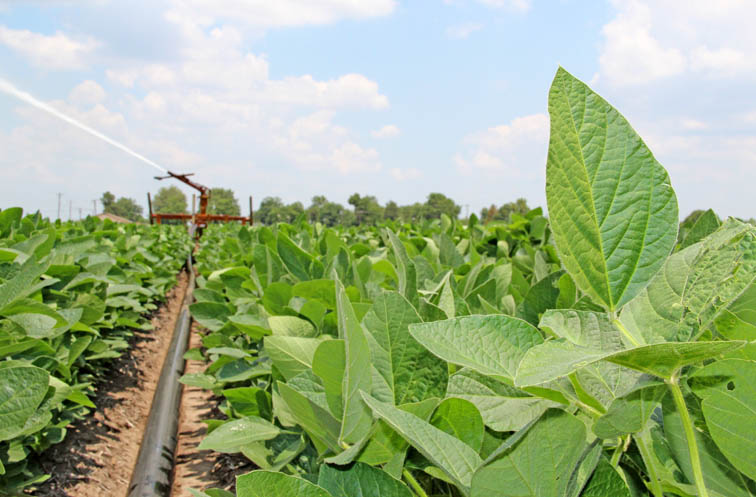August 8, 2012

Iowa State University plant pathologists have made a breakthrough in deciphering how plant-parasitic microscopic roundworms called cyst nematodes infect plants, like soybeans.
"Cyst nematodes have learned to communicate with plant cells in a very subtle way," said Thomas Baum, chair of Iowa State's plant pathology and microbiology department, who has been working with associate scientist Tarek Hewezi on the research.
Cyst nematodes feed on plant cells by penetrating the host plant's roots. They get their name from the shell-like cyst they form while attached to the roots that contains hundreds of eggs.
There are several types of cyst nematodes, but in Iowa the soybean cyst nematode (SCN) is the most costly and poses a serious annual threat to soybean yield. It has been found in the soil of fields in every county in Iowa and their cysts persist in the soil.
SCN is considered to be the most serious pathogenic threat of soybeans and is estimated to reduce returns to U.S. soybean producers by close to $1 billion annually.
Other scientists previously discovered that nematodes hijack plant development by injecting cells with chemical signals that cause hundreds of cells to fuse into a feeding site called the syncytium.
Baum and Hewezi sought to understand how the nematode changes the plant's gene activities for the purpose of turning it into a food source. The researchers' new approach was studying microRNAs, which are powerful regulators of gene activity.
"DNA by itself doesn't do anything until you have regulatory mechanisms that activate the genes found in it," said Baum. "MicroRNAs are molecules that suppress, or negatively regulate, how strongly their target genes are activated. So, high microRNA concentrations result in low target gene activity and vice versa."
They studied how cyst nematodes attacked the plant Arabidopsis, which is frequently used as a model plant because it has a relatively small genome. The researchers discovered a relationship that one microRNA, which was only known to be involved in shoot and leaf development, had with two genes. These genes are so-called transcription factors associated with plant growth regulation that themselves regulate the expression of many other genes. They determined that this microRNA-gene relationship was happening in the nematode feeding site, or syncytium.
"When the nematode initiates syncytium formation, microRNA396 concentration is dramatically reduced and the two target transcription factors consequently go up," said Baum. "It stays that way as the feeding site develops and when the syncytium is about finished, microRNA396 concentrations spike up and the transcription factors disappear." As a result, thousands of plant genes change their expression in the developing feeding site.
Hewezi and Baum used molecular biology techniques to generate experimental plants in which microRNA396 remains elevated in roots attacked by cyst nematodes and they found these plants were not as susceptible to the nematode. And when they adapted the target genes to be unaffected by microRNA396, they found these plants were less susceptible as well.
"So that all points in the right direction that microRNA396 together with its target genes have a real function in the interaction between cyst nematode and host plant. It's required to a certain degree for the parasite to be successful. As a result, we can use microRNA396 to develop novel control mechanisms against cyst nematodes," Baum said.
The researchers suspect that the same mechanism is happening in soybeans. "You can find this regulatory module in other plant species. We have found it in soybean and have shown similar changes during soybean cyst nematode attack. So it may have a broad impact," Hewezi said.
The Iowa Soybean Association funded research that led to the discovery, which was the subject of a journal article in Plant Physiology (http://www.plantphysiol.org/content/159/1/321.full?sid=6210d0f0-ea11-4117-8c77-a533af71ae19).
The Iowa State University Research Foundation is seeking patent protection on this discovery and the National Science Foundation recently funded a three-year study for $607,875 to continue work with Arabidopsis microRNAs during cyst nematode parasitism.
You May Also Like




